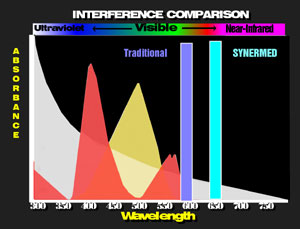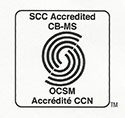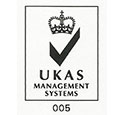Calcium
 |
 |
 |
|
Although the calcium test was not one of the more affected methods as reported by the studies of Glick et al. (which reported percentage of interference), the results of traditional calcium methods are often completely invalidated because of interference due to hemolysis or turbidity. Even a small (in terms of the Glick et al. rankings) error can change results from abnormally low to abnormally high due to the narrow normal range of the chemistry and the small percentage which the normal range represents relative to the mean of normal.
The Synermed® IR240 method is optimized for both ‘on board’ calibration stability and performance at 600 nm as well as 660 nm.
Magnesium shows no interference in serum, in contrast to most currently used methods.
-
-
-
-
- Multi-Day Calibration Stability
- Single Liquid Reagent
- Optimal Performance with Lipemic Samples
- No Interference from Magnesium
-
-
-
Principles of the Reaction
Calcium reacts with red Arsenazo III to produce a calcium-Arsenazo III complex which has an intense infrared-absorbing blue color under the conditions of the test. The chromophore produced has a molar absorbance which is twice that produced by traditional Arsenazo III reagents.
Arsenazo III + Ca+2 -> Arsenazo III - Ca+2 complex
(red) (blue)
The absorbance of the blue calcium-Arsenazo III complex can be measured at either 600 nm or at 650-660 nm and is proportional to the calcium concentration. Magnesium is prevented from forming a complex.
Product Packaging and Storage
| Cat No. | Product Name | Packaging | Package Volume (mL) | Storage |
| IR040-X | Calcium | 2x250 mL | 500 | 20-25° C |
| IR040 | Calcium | 6x250 mL | 1,500 | 20-25° C |
| IR040-L | Calcium | 6x1000 mL | 6,000 | 20-25° C |
| IR240-X | Calcium | 2x250 mL | 500 | 20-25° C |
| IR240 | Calcium | 6x250 mL | 1,500 | 20-25° C |
| IR240-L | Calcium | 6x1000 mL | 6,000 | 20-25° C |
| IR240-911 | Calcium | 8x50 mL | 400 | 20-25° C |
| IR240-WK | Calcium | 4x55mL | 220 | 20-25° C |
Connect with us
Certifications
 |
 |
 |
 |
||

